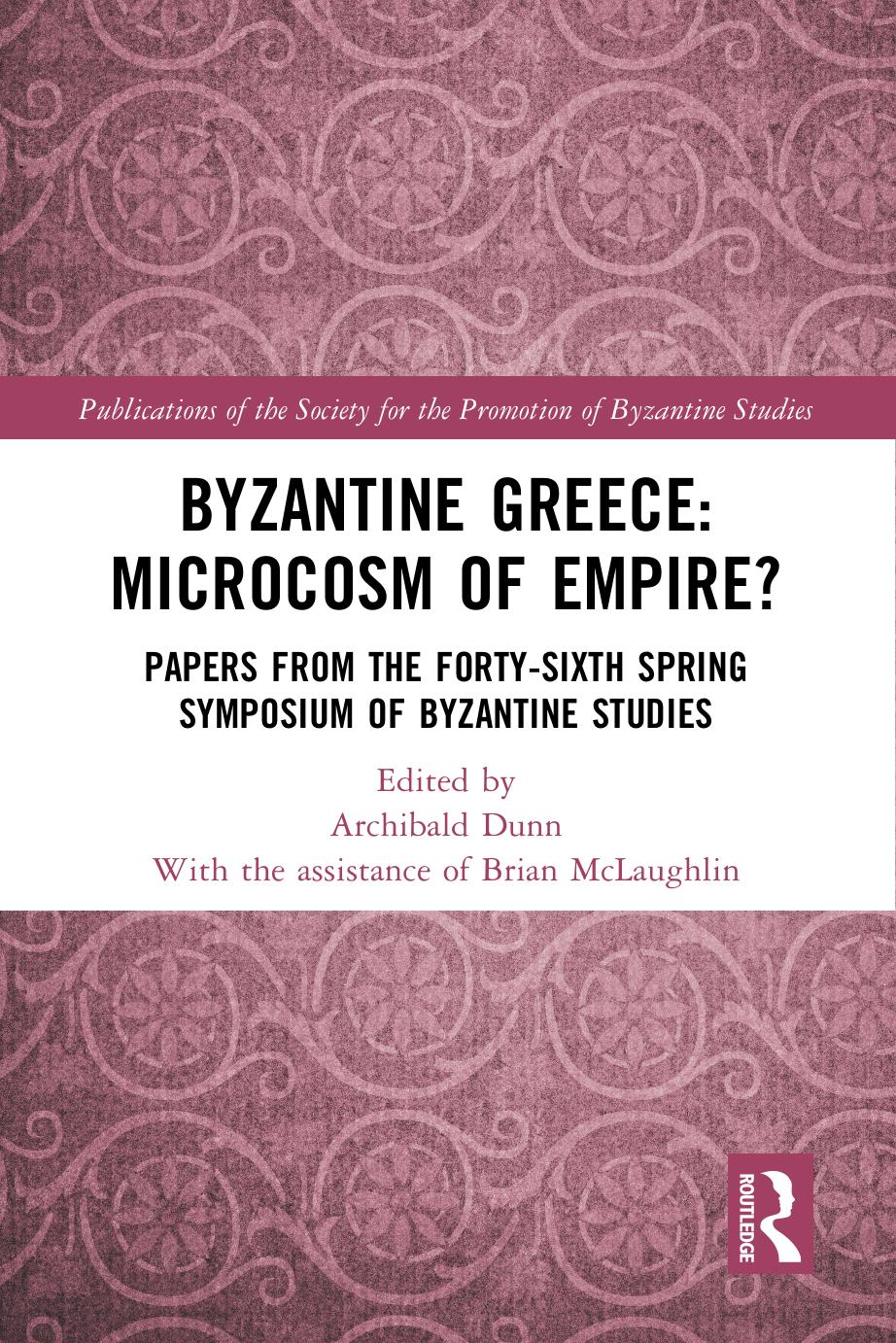Product desciption
Byzantine Greece Microcosm Of Empire Papers From The Fortysixth Spring Symposium Of Byzantine Studies Archibald Dunn by Archibald Dunn, Brian Mclaughlin, (eds.) 9781003429470, 1003429475 instant download after payment.
"This volume offers a structured presentation of the progress of research into the internal history of a part of the Byzantine world - Greece - in the centuries before the multiple changes induced or accelerated by the Fourth Crusade. Greece is a large area (several Early and Middle Byzantine provinces), with records, archival, literary, archaeological, architectural, and art-historical, most of which are unequalled in terms of their density and range. This creates opportunities for useful synthesis, and for dialogue with those now engaged in the rewriting, or writing, of the inner history of Byzantium, from Italy to the Caucasus, who have been stimulated by, or involved in, the editing of archives and inscriptions (including sigillographic), and in the publication of monuments, excavations and surveys (for all of which the "Greek space", the elladikê khôra, is a particular, and fertile, focus of activity, as the conference showed). Much of the material presented here can usually only be found in specialised publication, and indeed much in Greek alone. But, properly contextualised, this material about the "Greek space" deserves to be brought into the dialogues or debates at the heart of Byzantine Studies, for instance about the Late Antique "boom", urban life, the "Dark Age", economic change, the nature of the "Byzantine revival", and of social, socio-economic, and ethnic groups. The studies here synthesise such research, enabling the "Greek space" as a case study in the evolution of a significant region to the west of Constantinople, to take its place more fully as a point of reference in such dialogues or debates. Equally, it provides frameworks for archaeologists dealing with Greece from Late Antiquity onwards - and there are now many - with which to engage, and it makes available a rich source of comparative material for those studying the other regions of the Byzantine world, whether historically or archaeologically, in Southeastern Europe, Italy, or Turkey"--


